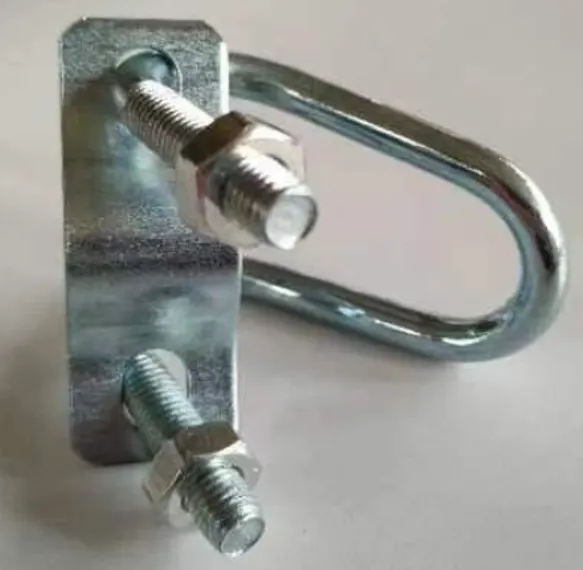loading...
- No. 9, Xingyuan South Street, Dongwaihuan Road, Zaoqiang County, Hengshui, Hebei, China
- admin@zjcomposites.com
- +86 15097380338
- Welcome to visit our website!
Reinforced Plastic Rods with Fiber for Enhanced Strength and Durability
Fiber Reinforced Plastic Rods An Overview
In recent decades, the development of advanced materials has significantly influenced various industries, including construction, automotive, aerospace, and sports. Among the notable advancements is the introduction of fiber reinforced plastic (FRP) rods. These rods have emerged as a preferred choice due to their exceptional strength-to-weight ratio, corrosion resistance, and versatility. This article explores the composition, properties, applications, and advantages of fiber reinforced plastic rods.
Composition and Structure
Fiber reinforced plastics are composite materials made from a polymer matrix reinforced with fibrous materials. The most common fibers used in FRP rods are glass, carbon, and aramid. These fibers provide enhanced mechanical properties, making the composite much stronger than its individual components. The polymer matrix typically consists of epoxy, polyester, or vinyl ester resins, which bind the fibers together, providing shape and stability.
The manufacturing process often involves techniques such as pultrusion, where fibers are drawn through a resin bath and then cured in a heated die to produce continuous lengths of FRP rods. Another method is filament winding, wherein fibers are wound around a rotating mandrel to create a rod or tube. The choice of manufacturing technique impacts the final properties of the product, including density, strength, and flexibility.
Mechanical Properties
Fiber reinforced plastic rods exhibit impressive mechanical properties, making them suitable for various applications. For instance, they possess high tensile strength, which means they can withstand substantial pulling forces without breaking. Additionally, FRP rods are lightweight compared to traditional materials like steel or concrete, reducing the overall weight of structures.
Another significant feature of FRP rods is their resistance to corrosion. Unlike metal rods that can degrade over time due to environmental exposure, FRP rods remain unaffected by moisture, chemicals, and UV radiation. This makes them ideal for use in harsh environments, including marine applications and chemical processing facilities.
Applications of FRP Rods
fiber reinforced plastic rod

The versatility of fiber reinforced plastic rods allows for a wide range of applications. In the construction industry, they are commonly used as reinforcement in concrete structures. They provide additional strength to concrete beams, slabs, and columns, enhancing their load-bearing capacity while reducing the risk of cracking.
In the aerospace sector, FRP rods are utilized in the fabrication of lightweight structural components, contributing to fuel efficiency and performance. The automotive industry also benefits from these materials, employing FRP rods in vehicle structures and components to reduce weight without compromising safety.
Moreover, in the sporting goods industry, manufacturers use fiber reinforced plastics to produce equipment such as fishing rods, tennis rackets, and bicycle frames. The lightweight and durable nature of FRP rods enhances performance while providing a comfortable user experience.
Advantages of FRP Rods
The advantages of fiber reinforced plastic rods are numerous. Firstly, their lightweight nature simplifies handling and transportation, reducing logistics costs. Secondly, their resistance to corrosion leads to increased longevity, decreasing the need for maintenance and eventual replacement. This not only saves time and resources but is also beneficial for the environment, reducing waste.
Furthermore, FRP rods can be engineered to meet specific requirements, allowing for customization in terms of rigidity and flexibility. This adaptability enables engineers and designers to create products tailored to particular application needs.
Conclusion
Fiber reinforced plastic rods represent a significant advancement in material science, combining strength, lightness, and resistance to adverse conditions. As industries continue to seek innovative solutions to enhance performance and sustainability, the use of FRP rods is likely to expand. Their versatility and unique properties make them an ideal choice for a multitude of applications, paving the way for the continued evolution of construction and manufacturing practices. As technology advances, we can expect to see even more innovative uses of fiber reinforced plastics, ensuring that they remain at the forefront of modern materials engineering.
-
The Rise of FRP Profiles: Strong, Lightweight, and Built to LastNewsJul.14,2025
-
SMC Panel Tanks: A Modern Water Storage Solution for All EnvironmentsNewsJul.14,2025
-
GRP Grating: A Modern Solution for Safe and Durable Access SystemsNewsJul.14,2025
-
Galvanized Steel Water Tanks: Durable, Reliable, and Ready for UseNewsJul.14,2025
-
FRP Mini Mesh Grating: The Safer, Smarter Flooring SolutionNewsJul.14,2025
-
Exploring FRP Vessels: Durable Solutions for Modern Fluid HandlingNewsJul.14,2025
-
GRP Structures: The Future of Lightweight, High-Performance EngineeringNewsJun.20,2025
